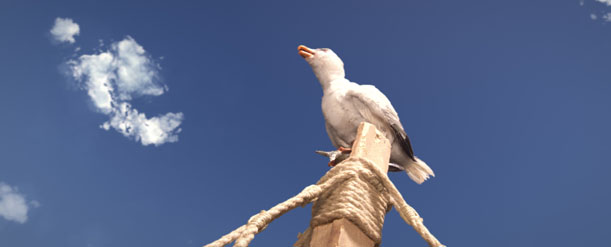Ambling around the V&A's new exhibition, At Home in Renaissance Italy, I was brought to a standstill this week by what I assumed must be an instrument of torture. A constrictive steel cage, hinged at the front and fastened with a hook, the contraption was clearly meant to fit bone-tight around a woman's torso, sharpening to a terrifying point at the pudenda. A casual glance suggested that it had been worn as a criminal punishment (or, at the very least, for some sado-masochistic sex game).
I was wrong though. The contraption - a 16th-century steel corset - was actually highly fashionable in its day, a serious status symbol for Europe's wealthiest women. Flora Dennis, Renaissance expert and co-curator of the exhibition, says, "Catherine de' Medici brought corsets like this in her trousseau when she came to France to marry Henry II in 1533, and we know that Eleanora di Toledo, who married Cosimo I de' Medici in 1539, ordered two or three of them ... Her wardrobe was cutting edge and we think her steel corsets were made by Cosimo's armourer."
The corsets were highly prized then, despite the fact that they severely constricted breathing and were widely thought to cause miscarriages (so much so that the Republic of Venice passed legislation in 1547 to stop Venetian women from wearing them).
The history of torturous women's fashion is as long as it is varied. In 8BC, Homer referred to the goddess Aphrodite as wearing her magic girdle to make the most of her "personal attractions". And, bringing us right up to the present day, this autumn's shoe of the season - with versions by everyone from Kurt Geiger to YSL - has a nine-inch heel and a three-inch platform sole, which forces its wearer into the toe-pummelling posture of a ballet dancer on points.
With the majority of women denied access to serious political power, extreme fashion has always been a way for wealthy women to signal their place in the pecking order, and, through the centuries, they have donned ever more punishing, controversial or impractical styles to emphasise their supremacy. In the 14th century, for instance, Queen Isabella of Bavaria inspired a fashion in which necklines plunged lower and lower, until eventually the breasts were exposed. The "little apples of paradise", as she liked to call her nipples, were rouged, pierced with jewels and linked with strands of pearls or gold chains.
The queen of impractical fashions was, notoriously, Marie Antoinette. She encouraged the female courtiers at Versailles to copy her "high roll" hairstyle (which sometimes towered up to 2ft high), and, as depicted in Sofia Coppola's new biopic of the French queen, this could certainly look very glamorous. The construction, however, was far less so. Long hair was cemented over a frame, then powdered, coated in beef fat, and decorated with anything from live birds in cages to topical naval battles complete with ships and smoke effects. The price for proving your social status was not just severe backache. To justify the style's expense, the hair generally stayed unwashed for weeks, the beef fat turning rancid, and live bird displays being replaced with infestations of mice and insects.
The extent to which women have tortured or hurt themselves through fashion over the years inspired Dr Alison Matthews David, professor of design history at Ryerson University in Toronto, to write the upcoming book, Fashion Victims: Death by Clothing.
"Many women have died over the centuries as a result of their clothes," points out Matthews David. Of course, Marie Antoinette and her noblewomen famously wore panniers that exaggerated their hips to preposterous pro-portions - fine unless they came into contact with a naked flame. And the desire to wear opulent, layered clothes has brought harm to countless women since. "If you had wide sleeves or crinolines and wore tulle or gauze, but went anywhere near a candle or a fire, your dress would catch alight. Emma Livry was a prima ballerina in the 1850s at the Paris Opéra and one night her tutu - plumped up by layers of petticoats - caught fire from one of the gas-lamps that lit the theatre. She later died from her burns. Interestingly, both of Oscar Wilde's half-sisters died like this too: one tried to save the other but was burnt to death herself." (Writing for the Woman's Journal, Wilde would later espouse more rational dress for women.)
Why did women continue to wear such dangerous garments? "If something was considered high fashion, a woman would be ridiculed for going against its dictates for the sake of comfort or practicality," says Matthews David. "Until the dress reform movements of the late 19th century the social facade that you presented through your dress and choice of fabrics was all-important."
So, along with the steel corset, the wealthy women of 16th-century Venice could sometimes be seen wearing another extraordinary item: the chopine. The first versions of these were originally designed for practical purposes - a slipper was mounted on to a moderately high, round, leather platform, which meant that the displacement of weight made it easier to walk across the wet and irregular stones of Venetian pavements. Some surviving pairs show that they eventually climbed as high as 30 inches.
Dennis says: "There are prints that show prostitutes wearing breeches and chopines, but wealthy women would also go out in the street supported by servants on either side." Whether it was because the height enabled the prostitute to be seen, and helped to emphasise the noble status of the Venetian women is unclear. Either way, a 30-inch heel makes today's fetish- inspired shoes look positively cosy.
When it comes to torture, makeup has also played its part. Italian women used extract of deadly nightshade as eyedrops, hence the plant's other name belladonna, meaning beautiful lady. The toxins in the drops dilated the pupil, increasing the heart rate and blurring the vision. This made women look and feel highly aroused, inevitably flattering the gentleman with whom they were flirting. Subsequent blindness from overusage was probably not quite so alluring.
Overuse of lead white as a type of foundation could lead to an agonising death from kidney collapse caused by "plumbism" or lead-poisoning. In her book Colour, Victoria Finlay says: "Lead white had been used unsparingly in face cream and makeup since Egyptian times: the Roman ladies swore by it; Japanese geishas used it - it contrasted beautifully with their teeth, which they had fashionably blackened with oak galls and vinegar. But even in the 19th century, when the dangers must have been better known, it was common on the dressing tables of women of all complexions."
While it is easy to look back on these historical trends and feel shocked at the lengths women have gone to, things are hardly less extreme nowadays. Aside from items such as the fetish shoe, our sartorial fashions tend to be a little more forgiving than the steel corset, but our attitude to our bodies is, let's face it, often far more interventionist.
It is now possible to have ribs removed, to have our legs broken and then lengthened, and to have our little toes removed to make pointy shoes more comfortable. And the latest trend, if its creators have any say, is to have jewels - in the shape of a heart, star or, weirdly, a euro-sign - embedded in our eyeballs.
Whether this proves safe in the long-term, or reversible, we will have to wait and see. Fashion may go in cycles but one thing is a constant - the suffering that goes with it.
· At Home in Renaissance Italy runs at the V&A until January 7 2007; vam.ac.uk
 One of better pieces of advice I was given before heading off to travel China was to bring my own chopsticks. This is not because China has a shortage of them, by any means. No, I was told to bring chopsticks because the majority of restaurants provide their guests with wooden chopsticks which are not thrown away after being used, but are washed and given to the next person who sits down to eat.
One of better pieces of advice I was given before heading off to travel China was to bring my own chopsticks. This is not because China has a shortage of them, by any means. No, I was told to bring chopsticks because the majority of restaurants provide their guests with wooden chopsticks which are not thrown away after being used, but are washed and given to the next person who sits down to eat. 














































